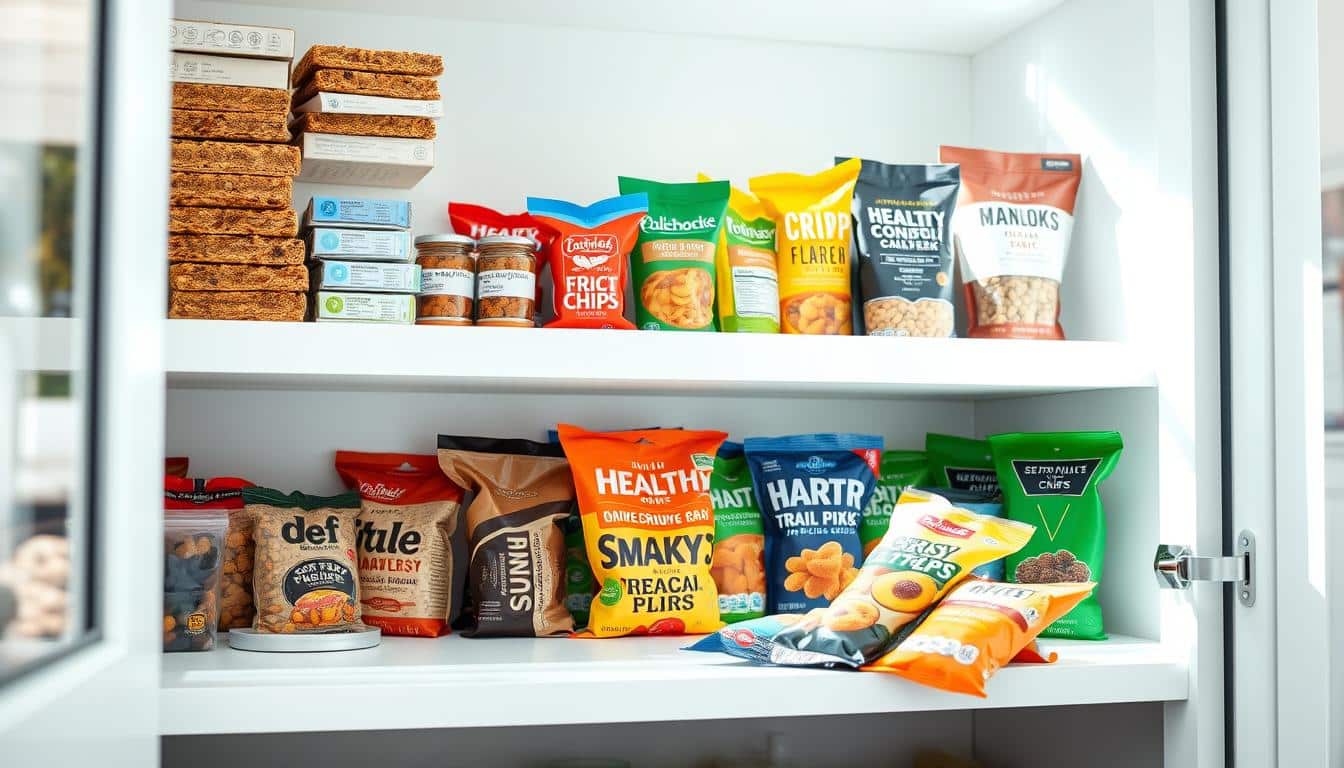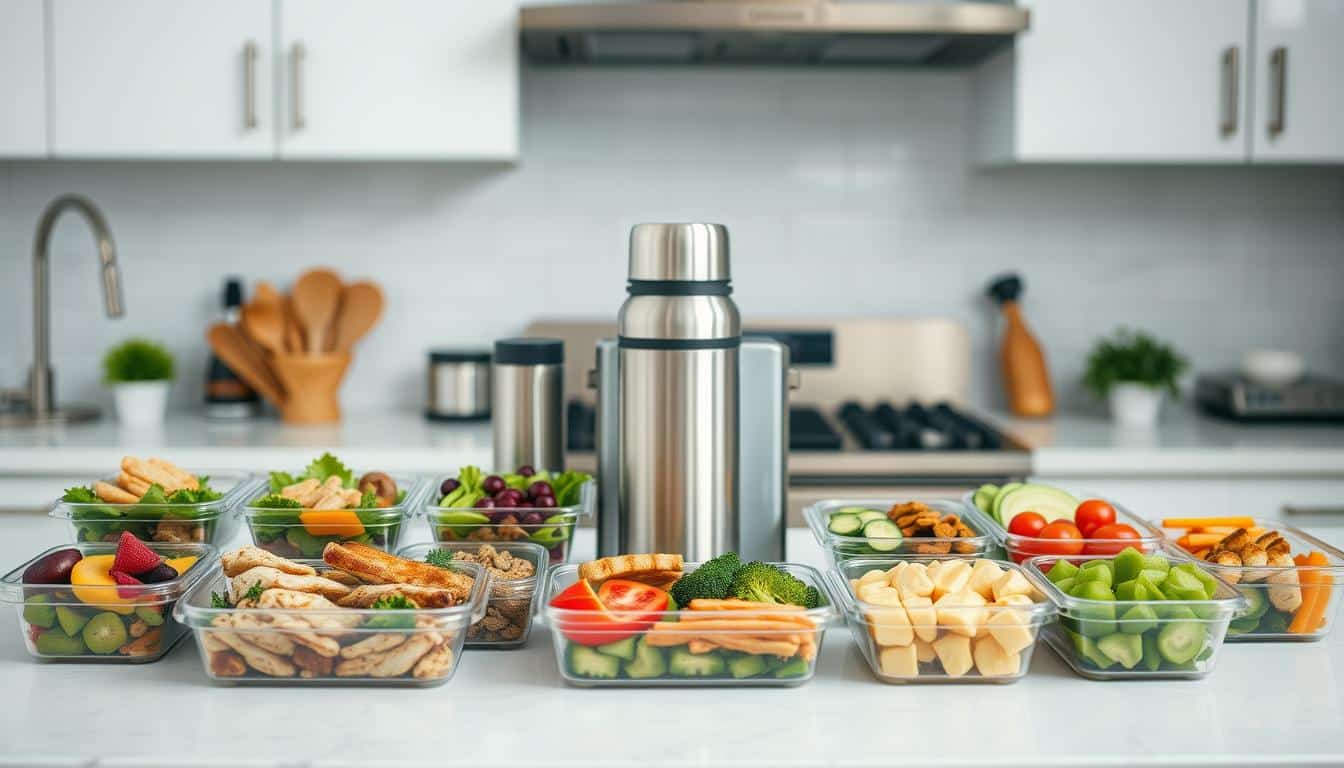In today’s fast-paced work environments, busy professionals need meal plans that are quick and easy. These meal subscription services provide personalized options for workspaces. This lets employees enjoy nutritious meals without losing time.
Providing healthy meals for professionals is key. It helps keep productivity and well-being high. These plans are vital for a work culture that values health and efficiency.
Understanding Elevator Compliance in Workspaces
Elevator compliance ensures everyone can access all work areas. This includes people with disabilities. It’s essential for meeting legal standards and creating a welcoming workplace. For example, the ADA demands that buildings are made or upgraded to be accessible.
To meet these standards, companies must include certain design features. Doors need to be wide, and elevators must have enough room inside. Also, buttons should be easy to feel and press. These improvements make it easier for everyone to move around. Plus, they help make the workplace safer and more productive for all.
Benefits of Meal Plans for Busy Professionals
Meal plans are great for busy people. They save a lot of time. You avoid the hassle of planning, shopping, and cooking every day. So, you can spend more time on your work instead of worrying about meals.
Healthy meal plans make the workplace better. Good food is key to staying healthy. Eating right gives you more energy and helps you focus. This means you’ll do better at work. Plus, happy and healthy workers create a happier place to work.
So, meal plans help make a workplace where everyone can do well, even when they’re busy.
Key Features of Elevator-Compliant Meal Subscription Services
Elevator-compliant meal subscription services cater to urban workspaces while following important rules. These services offer flexible delivery times to fit busy workplace schedules. This flexibility means employees can enjoy healthy meals without hassle.
Nutritional information is key for these services. They share details about ingredients and calories. This lets employees pick meals that suit their health needs and tastes. Plus, they can choose meals that fit their dietary needs.
These services also think about how meals travel in elevators. They use packaging that fits well in elevators to make delivery smooth. This careful planning shows their commitment to safety and practicality in city buildings.
Choosing the Right Meal Plan for Your Workspace
When choosing a meal plan for your workspace, think about what your employees like and need. Important parts of meal plan selection include:
- Dietary Restrictions: Knowing about different food needs, like gluten-free or vegan, makes sure everyone can eat.
- Meal Variety: Different menu options mean everyone can find something they like, keeping lunchtime exciting.
- Service Frequency: Think about how often you’ll serve meals. This can make a big difference in how happy your employees are.
- Delivery Methods: Look at how meals are brought in. It should be easy and not disrupt the workday.
- Integration with Workplace Culture: Your meal plan should match your company’s schedule and vibe to get the best response from your team.
Keeping these points in mind, you can pick the best meal plan. It will make eating at work better for everyone.
Elevator-Compliant Meal Subscription Services for Work
Many meal subscription services fit the busy lifestyle of professionals. They offer lots of meal choices designed for work settings. These services meet elevator rules and make the workplace better by mixing efficiency with fun.
Overview of Available Services
There are several meal subscription services for workplaces. Some top choices are:
- Freshly: Offers chef-crafted meals for busy professionals.
- Blue Apron: Provides ingredients and recipes for employees to create meals on-site.
- MealPal: Delivers a diverse menu of ready-to-eat meals from local restaurants.
These options make getting good food easy, avoiding the trouble of regular meal prep. They help businesses boost happiness and work performance.
Pricing and Plans
Companies can choose from many pricing plans to stick to their budgets. The choice depends on subscription flexibility and meal credits. Some options are:
- Weekly plans: Ideal for predictable meal needs.
- Monthly plans: Suitable for varying schedules and preferences.
- Pay-as-you-go options: Provide maximum flexibility for last-minute meal decisions.
Employers need to look at these options to find the best balance of cost and quality. This ensures they meet their team’s food needs.
Meal Prep Considerations for Workspace Efficiency
Making meal prep efficient is key to better workspace productivity. By planning meals ahead, employees can quickly pick their lunch and snacks. Planning ahead helps avoid the stress of deciding what to eat. This means more focus on work tasks.
Time Management Tips for Busy Employees
Good time management boosts productivity with meal prep. Here are ways to make meal prep work better for you:
- Batch cooking: Make many meals at once to save time all week.
- Meal scheduling: Use a weekly meal plan to keep things varied and avoid decision fatigue.
- Prepping ingredients: Cut up veggies or marinate meat before to make cooking faster on busy days.
- Utilizing containers: Keep meals in portioned containers for easy grab-and-go.
Using these methods makes meals less of a distraction and more a smooth part of the day. This improves both time management and how well the workday flows.
Health and Nutrition in Workspaces
Promoting nutrition at work is really important. It makes the office a better place to be. When people have access to healthy foods, they feel and work better.
By having good food choices at work, companies help keep their team healthy. This means people are happier and more focused on their jobs.
Wellness programs that focus on good eating habits are very helpful. These programs teach everyone why choosing healthy foods matters. It encourages them to eat better.
When we focus on health at work, there are lots of benefits.
- Increased energy levels throughout the workday.
- Improved concentration and productivity.
- Reduced absenteeism due to health-related issues.
Companies that support healthy eating at work really make a difference. They see that investing in their team’s health is worth it.
Accessibility Standards and Meal Plans
Making meal plans accessible is key for a supportive work atmosphere. Companies need to follow ADA standards to offer meals for everyone. This means thinking about how meals are packaged and delivered so all employees can enjoy them.
It’s more than just meeting the rules at the start. Companies have to keep checking if their meal services work well for everyone. Important points include:
- Designing packaging that is easy to open for those with limited dexterity.
- Ensuring delivery methods are suitable across different environments, from offices to remote locations.
- Adaptations in facilities to facilitate access to meal options for all employees.
When companies focus on inclusive meal services, they’re not just following ADA standards. They’re building a workplace where everyone feels valued, which makes morale better.

Incorporating Technology in Meal Planning
Modern workplaces now use meal planning technology to be more efficient and make employees happier. This progress includes different apps and tools that make ordering food easier, meet nutritional needs, and fit the busy life of an office. With the best tech solutions, companies can link meal planning smoothly with food delivery apps. This makes for a healthier work environment.
Apps and Tools to Consider
Meal tracking tools change how employees handle their diet at work. Here are some key apps and tools for your meal planning:
- Mealime: An intuitive app focusing on personalized meal plans tailored to dietary preferences.
- MyFitnessPal: A popular meal tracking tool ideal for monitoring nutritional intake and fitness goals.
- Uber Eats and DoorDash: Leading food delivery apps that provide flexible meal options directly to the workspace.
- Paprika: A versatile meal planning application that allows users to save recipes and organize their grocery lists.
Using these meal planning techs can make the process smoother, cut down on wasted food, and encourage better eating habits at work. By bringing in these up-to-date solutions, the dining experience at work can get much better. It follows rules well and boosts productivity.
Case Studies: Successful Implementations
Looking into how meal subscription services work shows the good they can do. Many organizations have seen benefits like better wellness and more productivity from their workers. Case studies of these meal plans reveal their success.
A top tech company put a custom meal plan in place for their workers. This boosted staff happiness by making it easier to eat healthily without wasting time. This move not only improved eating habits but also brought employees together. They enjoyed sharing meals and talking more during breaks.
A financial firm’s story is also motivating. They saw a big jump in how much their employees got done after starting a meal plan that fits with elevator use. With healthier food options, their workers felt more energized. This led to better overall performance at work.
These examples show how smart meal planning can change a workplace for the better. By hearing about these successes, other companies might see the value. They could see how such services might help their own teams.
Feedback from Employees and Employers
Getting feedback from employees and employers is key in checking how well meal subscription services work at a job. Surveys and real testimonials give us a peek into how happy employees are with their food options. This kind of feedback tells managers what’s good and what could be better, affecting the office vibe.
Feedback from employees points out ways to make things better. It makes them feel like they’re part of the process. They share if the meals meet their health and taste needs. Meanwhile, employers talk about how these services make things run smoother at work.
Here are some ways to gather this important info:
- Conducting regular surveys focused on meal preferences and satisfaction levels.
- Encouraging open discussions in team meetings to capture employee insights.
- Analyzing meal plan reviews to identify trends and areas for enhancement.
Conclusion
Putting elevator-compliant meal plans at work is crucial in today’s quick-paced corporate world. Companies that pair elevator compliance with custom meal services foster a better work environment. This approach boosts satisfaction and productivity by focusing on employee health.
These meal plans make the workplace better by offering healthy food for busy workers. As health becomes a priority, knowing about compliance is key. The future looks promising with options that fit everyone’s needs.
Businesses adopting these plans lead the way in workplace wellness, showing innovative nutrition methods. They boost employee health and create a positive, productive atmosphere. This effort drives their success forward.



